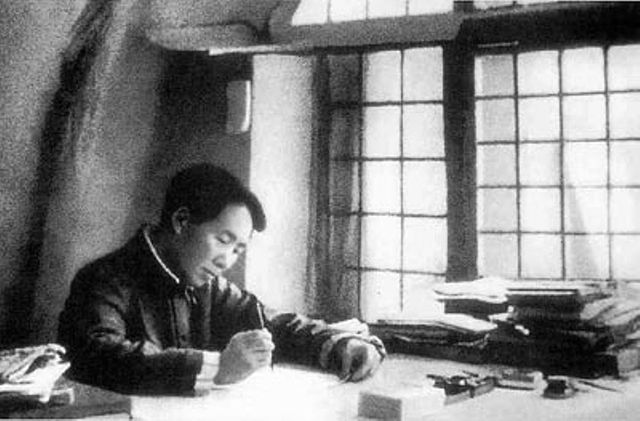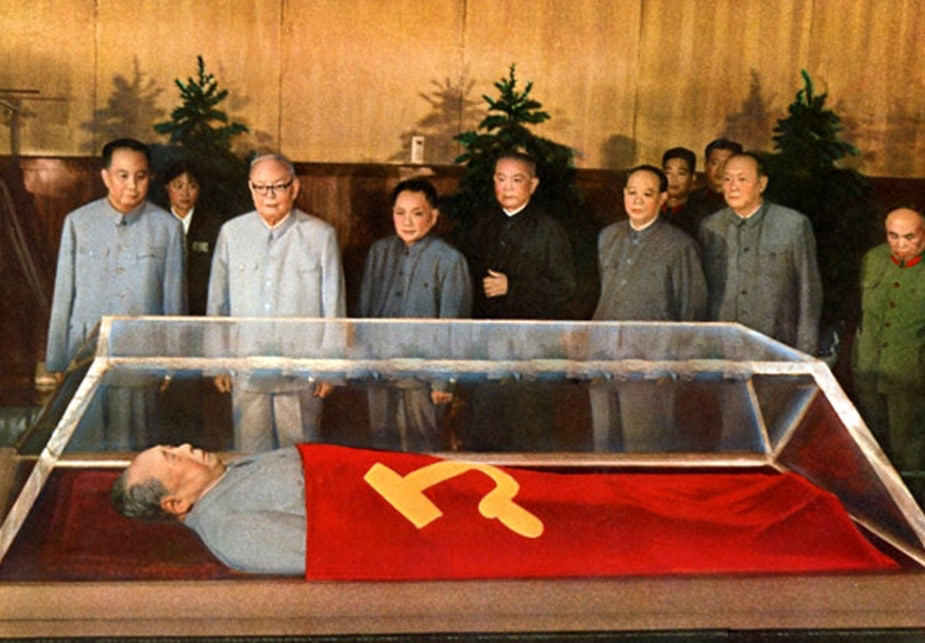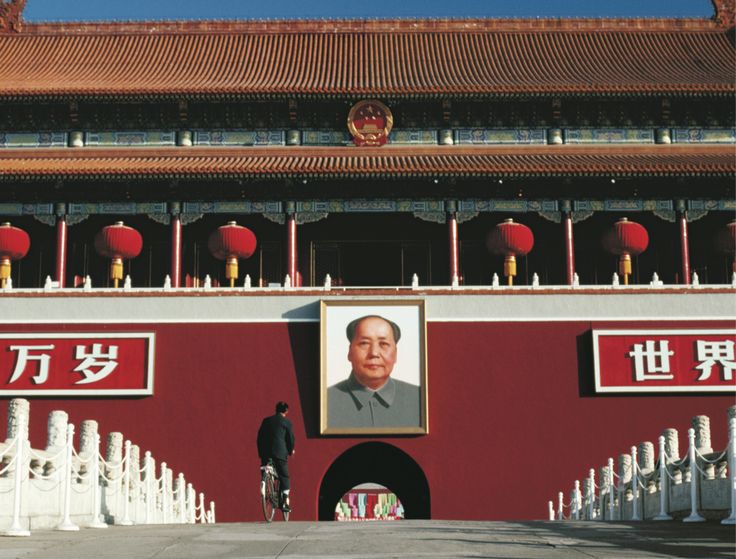Located in the heart of Beijing, the Mao Zedong Mausoleum is one of the most iconic and somber landmarks in China, drawing tourists and history enthusiasts alike who want to pay their respects to the man who changed the course of the nation’s history. Situated in Tiananmen Square, the mausoleum is a must-see stop for anyone exploring the political legacy of Mao Zedong and the rise of the People’s Republic of China.
When you visit the Mao Zedong Mausoleum, you are not just stepping into a building; you’re stepping into a powerful political statement. Opened in 1977, the mausoleum serves as the final resting place of Mao Zedong, the founding father of the People’s Republic of China, whose impact on the nation and the world is immeasurable. His embalmed body lies in state inside a grand hall, and visitors can witness this surreal and somber spectacle. The structure itself is a testament to Mao’s power, with its monumental design reflecting the grandeur of the era it symbolizes.
So, should you go and visit? Well at YPT from Uncle Ho to President Kim Il-Sung, we know a thing, or two about a good mausoleum!
Table of Contents
A Historical Overview of Mao’s Legacy
Mao Zedong’s influence continues to resonate deeply within China today. Born in 1893 in Hunan Province, Mao’s path to power was paved with revolutionary fervor and uncompromising ideology. Leading the Chinese Communist Party to victory in the Chinese Civil War, he eventually declared the founding of the People’s Republic of China in 1949. The years that followed saw dramatic changes for the country, including the Great Leap Forward and the Cultural Revolution. Despite the controversial and often destructive consequences of his policies, Mao remains a towering figure in Chinese history.
The Mao Zedong Mausoleum is not just a tribute to Mao’s life but a powerful symbol of the revolutionary ideals he championed. As you walk through the mausoleum’s cold, austere halls, you’ll notice the military presence and the reverent atmosphere that surrounds the space. It’s clear that Mao Zedong still holds a central place in the hearts of many Chinese people, even as the country moves forward in a rapidly changing world.

A Visit to the Mao Zedong Mausoleum
Visitors to the mausoleum are required to dress modestly and behave respectfully. There are strict security checks, and photography is not permitted inside the building. However, what you will encounter inside is a mesmerizing sight—Mao Zedong’s embalmed body, displayed in a glass sarcophagus under the dim, mournful lighting of the hall. His body is preserved in the same way that other revolutionary leaders in the world have been; it is an eerie moment for those who choose to visit.
The structure itself is a vast, imposing monument. Its red and gold colors and the large portrait of Mao Zedong hanging over the entrance create a sense of reverence and awe. Visitors can also explore the surrounding gardens, which add to the solemnity of the area.
While Mao Zedong’s rule is contentious, and many question the consequences of his leadership, the Mao Zedong Mausoleum offers a unique opportunity to reflect on the impact of his revolution. Whether you are a history buff or a curious traveler, a visit to the mausoleum offers a glimpse into China’s past and an understanding of the man who helped shape its present.
Different Spellings of Mao’s Name: Mao Zedong or Mao Tse Tung?
When searching for the Mao Zedong Mausoleum, you might come across different spellings of the name “Mao.” The most widely accepted transliteration today is Mao Zedong, which follows the Pinyin system, the official Romanization of Chinese characters in mainland China. However, you may also encounter the older, Wade-Giles Romanization of his name as Mao Tse Tung, which was used in the West for many years and remains popular in historical references. Both spellings refer to the same individual, the revolutionary leader who shaped modern China, but it’s worth noting the historical and cultural context in which each spelling was used.
While Mao Tse Tung Mausoleum is still a recognizable term, especially for those studying history or visiting Beijing’s various archives and museums, the official spelling has shifted to Mao Zedong Mausoleum in more recent decades. Either way, whether you’re visiting the Mao Tse Tung Mausoleum or the Mao Zedong Mausoleum, you’ll be stepping into the heart of China’s revolutionary past, where the memory of Mao Zedong continues to influence the country.
Click to read about Mao Anying.
Practical Information: How to Visit the Mao Zedong Mausoleum
If you’re planning to visit the Mao Zedong Mausoleum, there are some key things to know to ensure your experience is as smooth as possible. Here’s everything you need to know about the visit, including practical tips on when to go, how to get there, and the rules of entry.
Address and Directions
The Mao Zedong Mausoleum is located in the center of Tiananmen Square, one of the largest public squares in the world. The exact address is:
Mao Zedong Mausoleum
Tiananmen Square, Beijing, China.
The mausoleum is easily accessible from many parts of Beijing, especially if you’re already exploring Tiananmen Square, which is a major landmark and tourist attraction.

Opening Hours and Best Times to Visit
The Mao Zedong Mausoleum is open to the public daily, but only during certain hours. It generally operates from 8:00 AM to 12:00 PM, and it’s closed on Mondays for maintenance. The mausoleum can get crowded, especially during peak tourist seasons or national holidays, so the best times to visit are either early in the morning, right when it opens, or during off-peak days.
If you’re planning a trip to Beijing and want a more peaceful experience, consider visiting on a weekday, avoiding the busy tourist months of July and August. Public holidays like National Day (October 1st) also tend to see an influx of visitors, so plan ahead if you’re visiting during these times.
Entry Rules and Security
As with many significant government sites in China, the Mao Zedong Mausoleum has strict entry rules and security procedures. Security checks are thorough, and bags will be inspected before you are allowed to enter. Visitors are also required to pass through metal detectors.
Once inside the mausoleum, you’ll notice the somber atmosphere. You’ll be expected to maintain respectful behavior, with no loud talking or disruptive actions allowed. Photography is strictly prohibited inside the mausoleum to preserve the reverence of the space and the dignity of Mao’s embalmed body. If you’re caught taking photos, you may be asked to leave, so make sure to respect the rules.

Dress Code
While there is no formal dress code, it is important to dress modestly, as this is a site of national significance and respect. Avoid wearing shorts or sleeveless tops, as this may not be seen as appropriate in such a solemn setting.
Entry Fees
Admission to the Mao Zedong Mausoleum is free of charge, which is a rarity for such prominent attractions in Beijing. However, since it’s free, the mausoleum does tend to get crowded, particularly during peak times. To avoid large crowds, arrive early in the day.
Why Visit the Mao Zedong Mausoleum?
For anyone traveling to Beijing, the Mao Zedong Mausoleum should undoubtedly be on your list. It’s not just a museum or a tourist attraction—it’s an immersion into China’s political history. Visiting the mausoleum provides a rare opportunity to connect with the revolutionary spirit that changed the nation. The experience is thought-provoking, sometimes even unsettling, but ultimately, it’s an essential stop for anyone looking to understand the roots of modern China.
In a city brimming with history, the Mao Zedong Mausoleum stands as an unflinching reminder of the power of a single leader to reshape an entire nation. The mausoleum offers a unique historical perspective on the nation’s past, and the preservation of Mao Zedong’s body serves as a tangible symbol of the revolutionary ideals that shaped modern China. Whether you are a history buff or just an inquisitive traveler, visiting the Mao Zedong Mausoleum will certainly leave you with much to think about, offering deeper insight into a leader who still evokes strong opinions across the country.
Final Thoughts
The Mao Zedong Mausoleum in Beijing is not just an attraction; it’s an experience that takes you deep into China’s revolutionary past. It’s a must-see stop for anyone with an interest in understanding the political history of China and its path to becoming a global power. The mausoleum, with its grand design and reverent atmosphere, is a powerful reminder of Mao Zedong’s place in Chinese history, and its somber experience is something every visitor will take away with them.
Whether you’re a political historian or just curious about the man who shaped modern China, the Mao Zedong Mausoleum provides a unique window into the past that continues to resonate today.Click to check out our China Tours, as well as our North Korea Tours, many of which start from Beijing.





